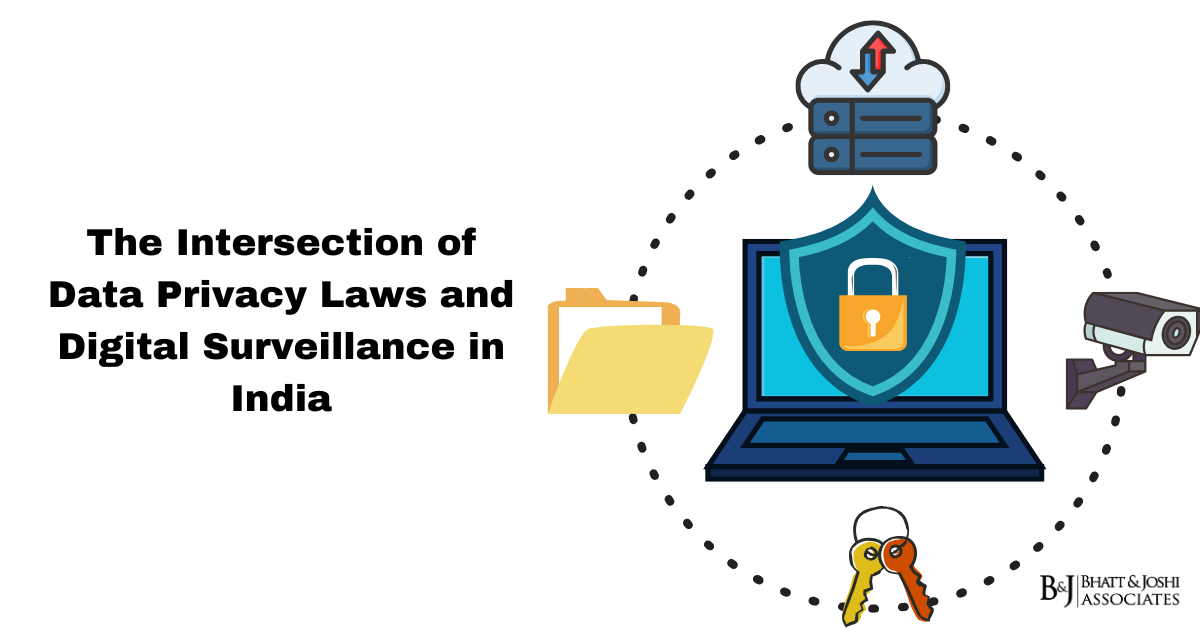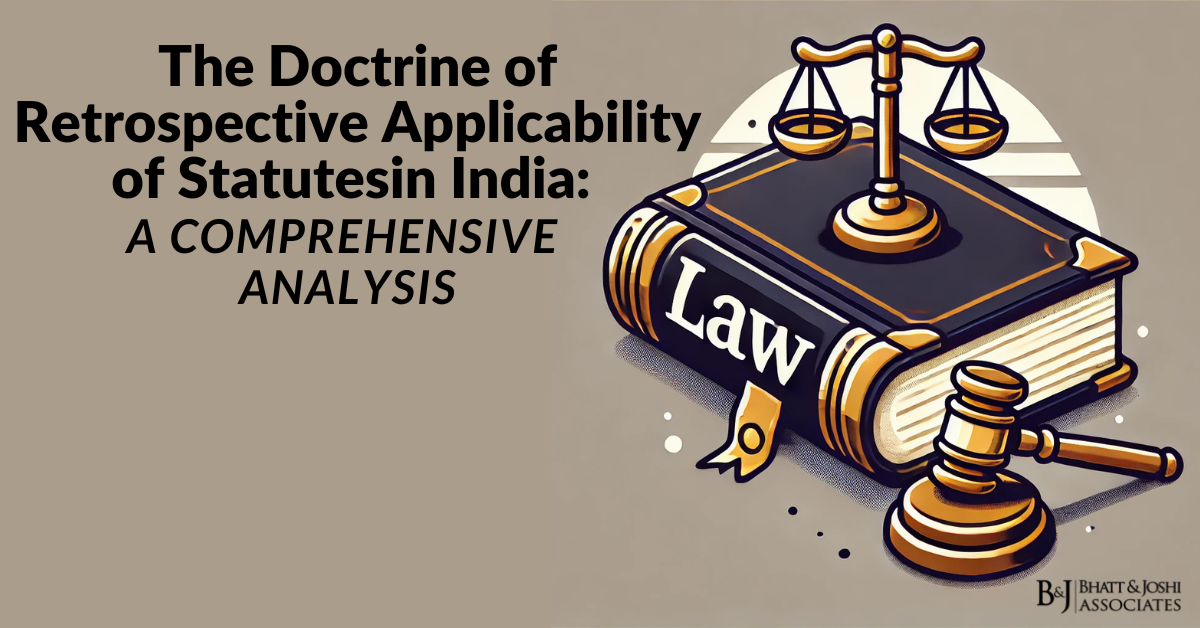Introduction
In an era dominated by technological advancements, data has emerged as one of the most valuable assets, serving as the backbone of modern economies and governance systems. Governments, corporations, and individuals increasingly depend on digital data to make decisions, promote economic growth, and address societal needs. In India, this dependence has brought to the forefront the critical issue of data privacy, especially as the nation adopts digital surveillance technologies to enhance national security, law enforcement, and administrative efficiency. The intersection of data privacy laws and digital surveillance in India presents a dynamic and evolving landscape, influenced by regulatory developments, judicial pronouncements, and public discourse.
The Evolution of Data Privacy in India
India’s journey toward establishing a robust data privacy framework has been marked by significant milestones. Historically, the country lacked a comprehensive legal structure for protecting personal data, relying instead on scattered provisions within existing laws. The turning point in India’s data privacy discourse came with the landmark Supreme Court judgment in Justice K.S. Puttaswamy (Retd.) v. Union of India (2017). The court’s decision recognized the right to privacy as a fundamental right under Article 21 of the Indian Constitution, establishing a foundational principle for future legislative efforts.
Following this judgment, the need for a dedicated legal framework became apparent. The government introduced the Personal Data Protection Bill (PDPB) in 2019, marking the first significant step toward regulating the collection, storage, and processing of personal data. However, the bill faced criticism for its broad exemptions for the government, raising concerns about potential misuse, especially in the context of digital surveillance. In 2022, the government withdrew the PDPB, citing the need for a more comprehensive framework, and subsequently introduced the Digital Personal Data Protection Bill (DPDPB) in 2023.
The DPDPB represents a modernized approach to data privacy, emphasizing principles such as purpose limitation, consent, accountability, and transparency. While it seeks to address the challenges posed by rapid digitization, its provisions concerning state surveillance have reignited debates about balancing individual privacy rights with national security imperatives.
Digital Surveillance in India: Expanding Horizons
Digital surveillance in India has grown significantly over the years, driven by advancements in technology and the government’s focus on leveraging digital tools for governance and security. Key initiatives like the Aadhaar project, the Central Monitoring System (CMS), the National Intelligence Grid (NATGRID), and the Integrated Criminal Justice System exemplify the increasing reliance on surveillance mechanisms to address administrative and security challenges.Right to Privacy in India
Aadhaar: The Contested Biometric System
Aadhaar, the world’s largest biometric identification system, has been at the center of the privacy versus surveillance debate. Introduced to streamline welfare delivery and promote financial inclusion, Aadhaar has transformed India’s governance landscape. However, concerns about data security, potential misuse of personal information, and lack of robust safeguards have sparked widespread debate.
The Supreme Court’s judgment in Justice K.S. Puttaswamy (Retd.) v. Union of India (2018) addressed many of these concerns, upholding the constitutional validity of Aadhaar while imposing strict limitations on its use. The court ruled that Aadhaar authentication should not be mandatory for services like mobile connections and bank accounts, emphasizing the need to minimize privacy intrusions.
The Central Monitoring System (CMS) and NATGRID
The CMS, operational since 2013, enables real-time monitoring of telecommunications and internet traffic by intelligence agencies. Similarly, NATGRID integrates databases from various government agencies, facilitating data sharing to enhance national security and law enforcement efforts. While these systems have proven instrumental in combating crime and terrorism, they have also raised significant concerns about unchecked state surveillance and the potential for abuse.
Emerging Technologies and AI Surveillance
The deployment of emerging technologies such as artificial intelligence (AI), facial recognition, and predictive analytics has further expanded the scope of digital surveillance in India. Systems like the Delhi Police’s use of facial recognition technology and predictive policing tools have highlighted both the potential and pitfalls of such innovations. Critics argue that these technologies, if not regulated appropriately, can exacerbate biases, infringe on civil liberties, and deepen societal inequalities.
Legal Framework Governing Digital Surveillance
India’s legal framework for digital surveillance is primarily rooted in the Information Technology Act, 2000 (IT Act), and the Indian Telegraph Act, 1885. These laws grant the government wide-ranging powers to intercept, monitor, and decrypt communications, provided such actions serve the interests of national security, public order, or the prevention of crime.
The Information Technology Act, 2000
Section 69 of the IT Act empowers the government to issue orders for surveillance if it deems such action necessary for specific purposes. The procedural safeguards for such activities are outlined in the Information Technology (Procedure and Safeguards for Interception, Monitoring and Decryption of Information) Rules, 2009. However, critics argue that the rules lack sufficient checks and balances, raising concerns about arbitrary and disproportionate surveillance practices.
The Indian Telegraph Act, 1885
The Indian Telegraph Act provides similar powers under Section 5(2), allowing the interception of messages under specific conditions. While procedural safeguards exist, the law’s colonial origins and broad language have prompted calls for modernization to address contemporary challenges.
Judicial Oversight and Landmark Rulings on Digital Surveillance
Indian courts have played a crucial role in scrutinizing surveillance practices and reinforcing privacy safeguards. The judiciary’s interventions have shaped the discourse around balancing privacy rights with state interests, often emphasizing the principles of necessity and proportionality.
PUCL v. Union of India (1997)
In People’s Union for Civil Liberties (PUCL) v. Union of India (1997), the Supreme Court laid down procedural safeguards for telephone tapping, including the requirement of prior approval from a competent authority and periodic review by a review committee. These principles have significantly influenced subsequent surveillance regulations under the IT Act and the Telegraph Act.
The Pegasus Spyware Controversy
The Pegasus spyware controversy brought digital surveillance into the spotlight, with allegations of unauthorized surveillance on activists, journalists, and political leaders using Pegasus software. The Supreme Court’s decision to constitute a technical committee to investigate these allegations underscored the need for greater accountability and transparency in state surveillance practices.
Balancing Data Privacy Laws and Digital Surveillance: Challenges and Opportunities
The tension between data privacy and digital surveillance arises from the dual objectives of protecting individual rights and ensuring national security. While privacy advocates emphasize the need for robust safeguards to prevent misuse of surveillance powers, the government argues that surveillance is essential to combat terrorism, cybercrime, and other threats.
Global Comparisons
A comparative analysis of global practices reveals valuable insights for India. In the United States, the Foreign Intelligence Surveillance Act (FISA) requires judicial approval for certain surveillance activities, while the United Kingdom’s Investigatory Powers Act mandates judicial commissioners to oversee surveillance requests. These mechanisms highlight the importance of independent oversight to ensure accountability and minimize abuse.
Legislative Reforms in India
The DPDPB represents a critical step toward balancing privacy and surveillance in India. However, its provisions granting broad exemptions to the government have drawn criticism. To address these concerns, the bill must incorporate explicit limitations on surveillance activities, coupled with strong oversight mechanisms.
The Path Ahead: Ensuring Privacy Amid Surveillance
India stands at a crossroads, navigating the delicate balance between privacy and security, as data privacy laws and digital surveillance reshape the nation’s governance landscape and highlight the need for multifaceted reforms. Establishing independent oversight mechanisms could serve as a cornerstone for ensuring accountability in surveillance practices. Transparency measures, such as periodic disclosure of surveillance data and its legal basis, could foster trust among citizens.
Strengthening procedural safeguards is another critical area. Surveillance laws should clearly define the scope, purpose, and duration of permissible activities while mandating proportionality tests to prevent misuse. Emphasizing privacy-preserving technologies like encryption and anonymization can further mitigate risks associated with data breaches and unauthorized access.
Public awareness is pivotal in this effort. Citizens must be educated about their rights, the implications of surveillance technologies, and the channels available for redressal. This can create a more informed populace capable of holding both public and private entities accountable.
Judicial oversight remains an essential component of this framework. Regular judicial reviews and stringent standards for authorizing surveillance can uphold the principles of necessity and proportionality, ensuring that state actions do not infringe on fundamental rights.
Conclusion
The intersection of data privacy laws and digital surveillance in India encapsulates a profound and evolving challenge. Recognizing privacy as a fundamental right was a historic step, but the journey to creating a balanced framework continues. By adopting democratic principles, fostering transparency, and leveraging technology for public good, India can navigate these complexities effectively. This balance will not only safeguard individual rights but also strengthen public trust and national security. With continuous evaluation and adaptive policymaking, India can set a global benchmark in addressing the challenges posed by the interplay of privacy and surveillance.














